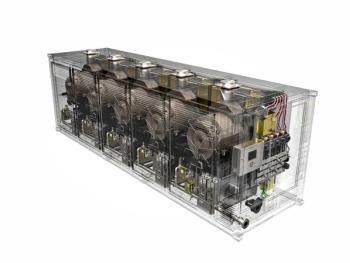
GE to Spin Off Gas Turbine Business
Gas Turbines to be Spun Off as part of Independent Energy Company
GE CEO Larry Culp chose LinkedIn to make a major announcement this week. After getting rid of divisions such as consumer appliances, locomotive manufacturing, and its entire oil & gas portfolio (sold to Baker Hughes), the company is slimming down once again.
Culp intends to split the company into three entities: healthcare, aviation, and energy. Apparently, the GE name will live on in aviation, with the other two areas being rebranded. But that is not set in stone. Each entity will be independent and publicly traded. The plan is to separate the healthcare unit first, and follow that with energy, leaving aviation on its own.
“We are on a path to become three stronger, more-focused companies positioned to lead in the important high-growth sectors of aviation, healthcare, and energy,” said Culp. “We must continue to deliver on our purpose of rising to the challenge of building a world that works by creating a future of smarter and more efficient flight; developing precision healthcare that personalizes diagnoses and treatments; and leading the energy transition to drive decarbonization.”
Missing in Action
These pronouncements probably won’t fill the gas turbine supply chain with hope for a brighter future. The majority of gas turbines operating in the world today were made by GE. The company also has a 45% share in the advanced gas turbine category (the most modern models) since 2014, according to Dora Partners. Among aeroderivative gas turbines, GE gobbled up 88% of worldwide sales in 2020 (excluding Russian orders).
But overall gas turbine orders have been
The current strategy seems to be to sell what gas turbines they can, while building up their hydrogen, energy storage, and renewable portfolio. What is hard to find is anything related to reversing the downtrend on gas turbine sales.
A spin off into an energy company in a year or two isn’t likely to change anything. If the company has energy storage, renewables, and traditional power in its portfolio, guess which ones it is going to emphasize? It might be better to divest all gas turbine operations into a company led by someone that wants to drive turbine sales upward. That company could include research and development of hydrogen, hybrid, and supercritical carbon dioxide-fueled turbines while continuing to find ways to better market and sell natural-gas fueled turbines.
The transition of energy won’t happen overnight. Even states hostile to natural gas such as California recently purchased a bunch of mobile GE TM2500 turbines to maintain power reliability. As more renewables are added to the grid, natural gas plants are vitally needed to support grid fluctuations, provide inertia, and meet the inevitable shortfalls that occur suddenly during peak periods. The world needs both. And right now, there are not enough people in the gas turbine corner making that point clear.
Let’s see how GE’s plan unfolds in the real world.
Newsletter
Power your knowledge with the latest in turbine technology, engineering advances, and energy solutions—subscribe to Turbomachinery International today.




